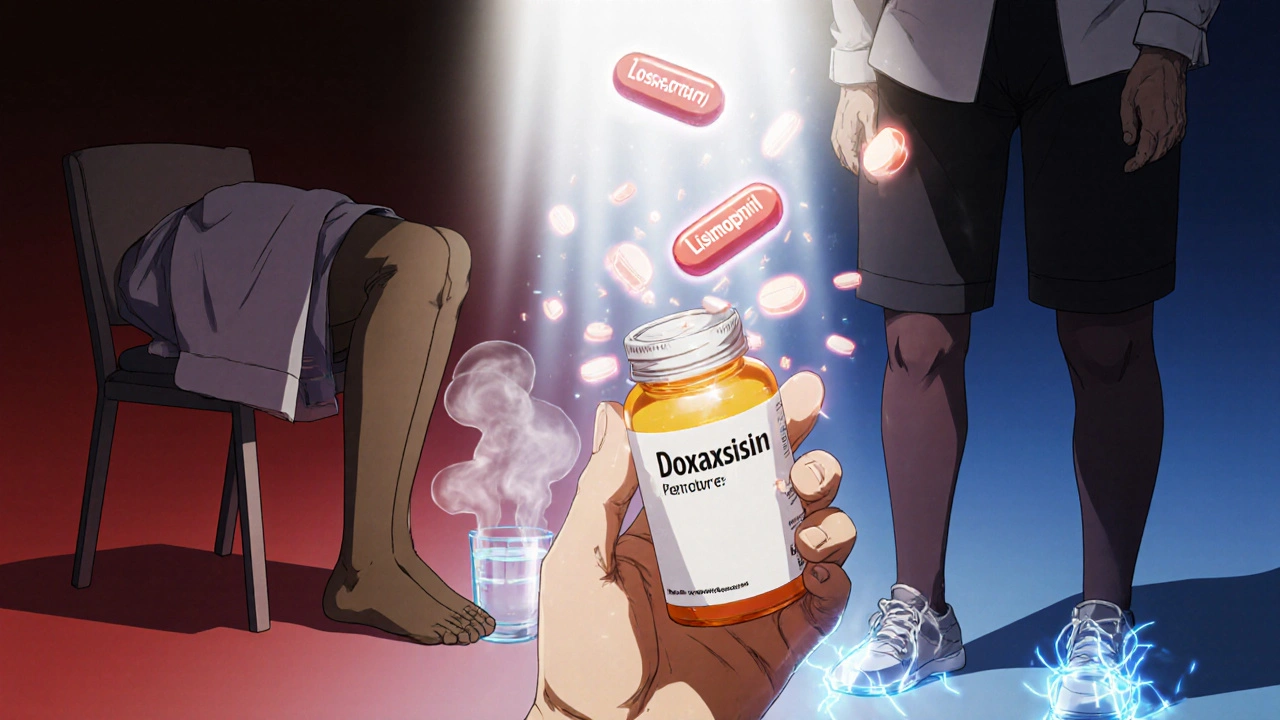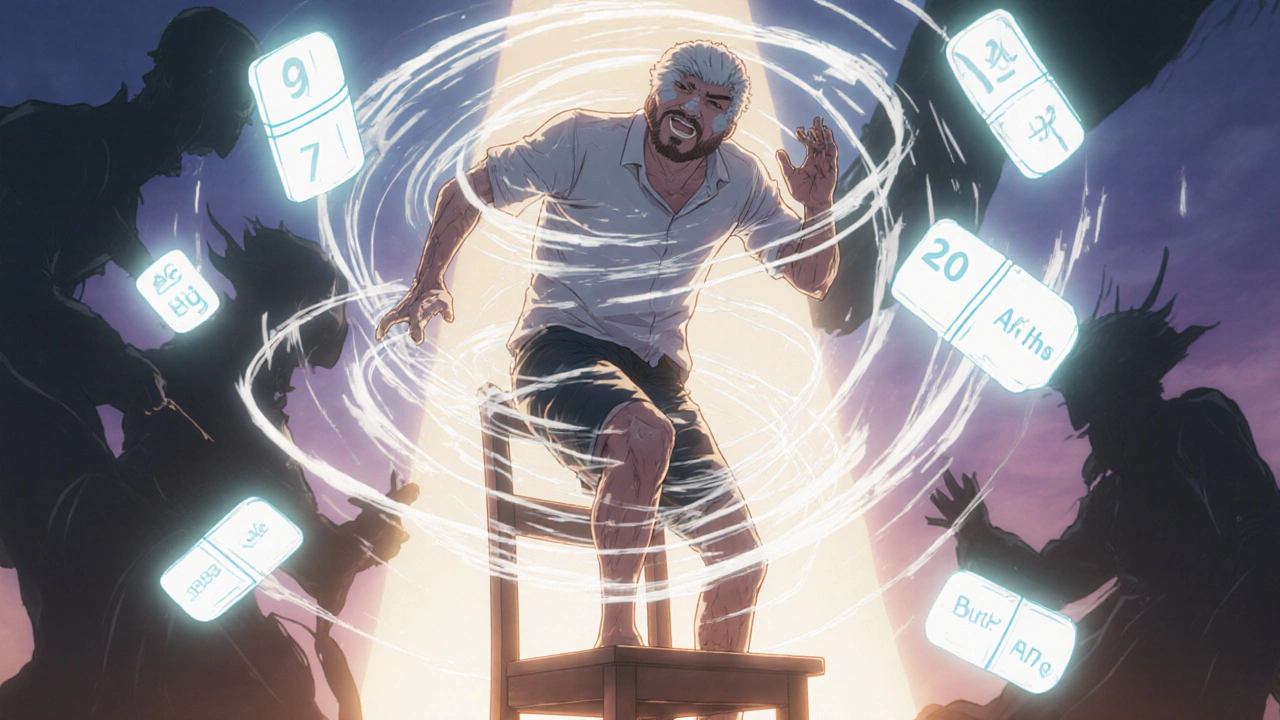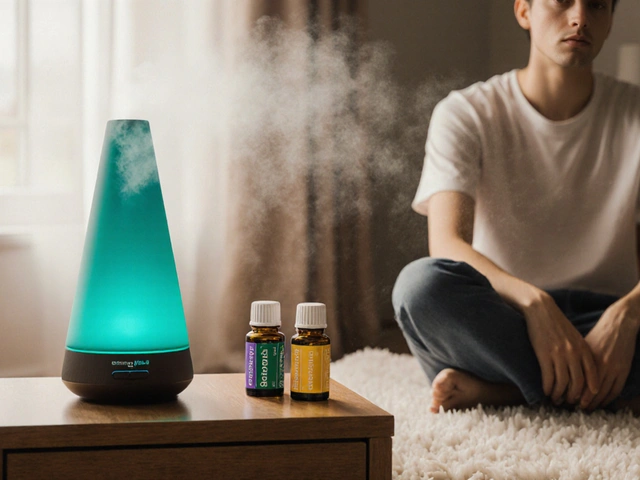Standing up from a chair and feeling dizzy? For many older adults on blood pressure medication, this isn’t just a momentary stumble-it’s a warning sign. Orthostatic hypotension, a sudden drop in blood pressure when standing, affects up to 26% of hypertensive seniors. And here’s the twist: the very drugs meant to protect their hearts might be making them more likely to fall.
What Exactly Is Orthostatic Hypotension?
Orthostatic hypotension isn’t just feeling a little lightheaded. It’s a measurable, dangerous drop in blood pressure-at least 20 mm Hg in systolic or 10 mm Hg in diastolic-within three minutes of standing. This isn’t rare. In older adults with high blood pressure, it’s common. The body’s natural ability to adjust blood flow when standing weakens with age. Baroreceptors, the sensors that tell your heart and blood vessels to tighten up when you rise, don’t respond as quickly. Add in medications, and the risk spikes.Which Blood Pressure Drugs Carry the Highest Risk?
Not all antihypertensives are equal when it comes to orthostatic risk. Some are far more likely to cause dizziness or falls than others.- Alpha blockers (like doxazosin, terazosin) carry the highest risk-up to 28% of seniors on these drugs experience orthostatic hypotension. They relax blood vessels too aggressively, especially when standing.
- Beta-blockers (metoprolol, atenolol) increase risk by more than threefold for sustained low blood pressure upon standing. They slow the heart’s response, making it harder to compensate when you rise.
- Diuretics (furosemide, hydrochlorothiazide) reduce blood volume. Less fluid means less pressure to push blood up to the brain when standing.
- Central sympatholytics (clonidine, methyldopa) blunt the nervous system’s ability to raise blood pressure on demand.
- Calcium channel blockers like amlodipine are generally safer, but diltiazem and verapamil can still cause issues in older adults due to slower liver metabolism.
On the other hand, ACE inhibitors (lisinopril) and ARBs (losartan, valsartan) have the lowest risk. Studies show they reduce orthostatic hypotension episodes by 14-15% compared to other classes. They don’t just lower blood pressure-they help maintain balance in how the body regulates it.
The Big Myth: More Aggressive Treatment = More Danger
For years, doctors were told to ease up on blood pressure meds in older adults to avoid dizziness. That thinking is outdated-and potentially harmful. The landmark SPRINT trial, which tracked over 9,000 adults over 50, found something surprising: those who aimed for a systolic blood pressure below 120 mm Hg didn’t have more falls or dizziness than those targeting 140 mm Hg. In fact, the more tightly controlled group had 17% lower risk of orthostatic hypotension over time. Why? Because uncontrolled high blood pressure damages the very systems that help you stand up safely. When arteries stiffen and the heart weakens from years of high pressure, the body loses its ability to adapt. Lowering pressure gently and consistently helps restore that balance.
What to Do If You’re Dizzy When You Stand
If you’re on blood pressure medication and feel lightheaded when standing, don’t just power through it. Here’s what works:- Move slowly. Sit on the edge of the bed for 30 seconds before standing. Pause again before walking.
- Don’t stand right after meals or bathroom trips. Blood flows to your gut after eating. Your body is already working hard-adding standing on top of that is asking for trouble.
- Hydrate. Drink a glass of water before getting up. Even mild dehydration worsens orthostatic drops.
- Wear compression stockings. They help push blood back up from your legs, reducing pooling.
- Practice standing up. Do it several times a day, slowly. Your body learns to adjust.
Most people see improvement in 2-4 weeks with these simple steps. No drugs needed.
When Medication Changes Are Necessary
If lifestyle changes aren’t enough, your doctor may consider switching your meds. This isn’t about stopping treatment-it’s about choosing better tools.- If you’re on an alpha blocker, ask about switching to an ARB or ACE inhibitor.
- If you’re on a beta-blocker for heart rate control, ask if a different class (like a calcium channel blocker) could work.
- If you’re on multiple blood pressure drugs, your doctor may reduce or eliminate one. Often, just removing one high-risk drug cuts dizziness by 65% in clinical practice.
Never stop or change your meds on your own. But do ask: “Is this the safest option for me, given my risk of falling?”
What About Medications Just for Orthostatic Hypotension?
Drugs like midodrine, droxidopa, or fludrocortisone are sometimes prescribed to treat orthostatic hypotension directly. But they’re not first-line for seniors.- Midodrine raises blood pressure-but can cause dangerously high pressure when lying down.
- Fludrocortisone increases fluid retention, which can worsen heart failure.
- Droxidopa helps with dizziness but has side effects like headaches and high nighttime BP.
These are reserved for severe cases where the risk of falls is extreme and other options have failed. Most seniors do better with smarter antihypertensives and non-drug strategies.

The Bottom Line: Safety Isn’t About Lower Numbers-It’s About Balance
Your blood pressure goal isn’t just a number on a chart. It’s about staying steady on your feet, avoiding falls, and living independently. For older adults, the safest approach isn’t the weakest treatment-it’s the most thoughtful one.Ask your doctor:
- Which of my meds are most likely to cause dizziness?
- Can we switch to a lower-risk class like an ARB or ACE inhibitor?
- Should I check my blood pressure both lying down and standing?
- Am I on more meds than I need?
Many seniors feel better-not because their blood pressure is lower-but because their body finally has the stability it needs to move safely. That’s real progress.
What’s Changing in 2025?
New guidelines from the European Society of Cardiology and updates to the American Geriatrics Society Beers Criteria now clearly label alpha blockers and certain beta-blockers as potentially inappropriate for older adults with orthostatic risk. Prescribing patterns are shifting: 38% of new hypertension prescriptions for seniors in 2023 were ARBs or ACE inhibitors-up from 32% just three years ago. Research is also moving toward “smart” medications that adjust their effect based on body position. Two compounds are in Phase II trials, designed to relax arteries when you’re lying down but stay quiet when you stand. These won’t be available yet-but the direction is clear: future treatments will be personalized, not one-size-fits-all.Can blood pressure medication cause falls in older adults?
Yes, certain blood pressure medications-especially alpha blockers, beta-blockers, and diuretics-can increase the risk of falls by causing orthostatic hypotension. This is a sudden drop in blood pressure when standing, leading to dizziness or fainting. However, not all blood pressure drugs carry the same risk. ACE inhibitors and ARBs are much safer and may even reduce fall risk by improving overall cardiovascular stability.
Should I stop my blood pressure medicine if I get dizzy when I stand?
No. Stopping your medication without medical advice can raise your risk of stroke or heart attack. Instead, talk to your doctor. Dizziness may mean you need a different type of blood pressure drug, a lower dose, or a change in timing. Many seniors feel better after switching from high-risk drugs like alpha blockers to ARBs or ACE inhibitors.
Is it safe to have a low blood pressure target like 120/80 if I’m over 65?
Yes, and it’s often safer than higher targets. The SPRINT trial showed that older adults who aimed for a systolic pressure below 120 mm Hg had fewer heart problems and no more falls than those with a target of 140 mm Hg. In fact, tight control reduced orthostatic hypotension risk by 17%. The key is gradual adjustment and monitoring how you feel when standing.
Which blood pressure meds are safest for seniors?
ACE inhibitors (like lisinopril) and ARBs (like losartan or valsartan) are the safest choices for older adults at risk of orthostatic hypotension. They lower blood pressure without significantly increasing dizziness. Among calcium channel blockers, amlodipine and isradipine are better tolerated than diltiazem or verapamil. Avoid alpha blockers and certain beta-blockers unless absolutely necessary.
How long does it take to adjust to new blood pressure meds?
It usually takes 4-6 weeks for your body to fully adjust to a new blood pressure medication. During this time, your doctor should check your blood pressure both lying down and standing. Non-drug strategies like moving slowly, staying hydrated, and wearing compression stockings can help reduce dizziness while your body adapts. Most people notice improvement in 2-4 weeks with consistent habits.
Next Steps for Seniors and Caregivers
If you or a loved one is on blood pressure medication and has had a fall, dizziness, or near-fall:- Write down when dizziness happens-after meals? After standing quickly? After taking meds?
- Bring a list of all medications (including supplements) to your next appointment.
- Ask for a standing blood pressure check during your visit.
- Request a medication review with your pharmacist or geriatrician.
Many seniors live longer, more active lives-not by taking fewer pills, but by taking the right ones. The goal isn’t just to lower blood pressure. It’s to live without fear of falling.







Edward Batchelder
November 27, 2025 AT 04:45